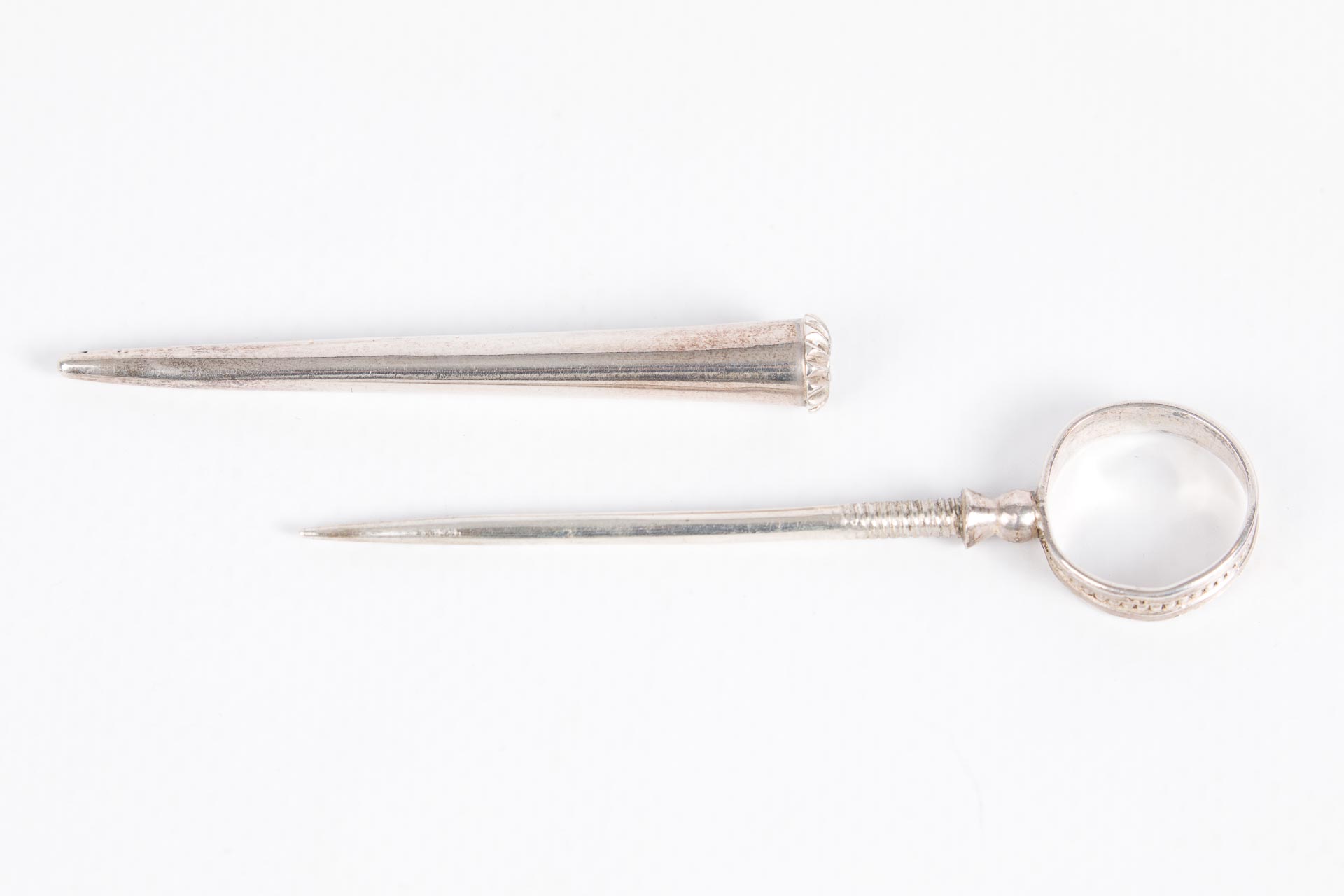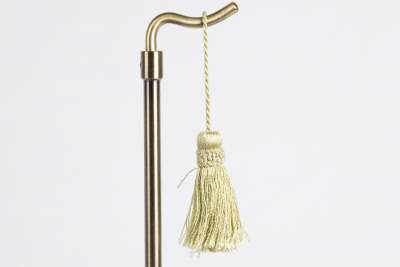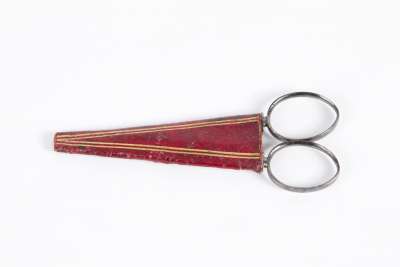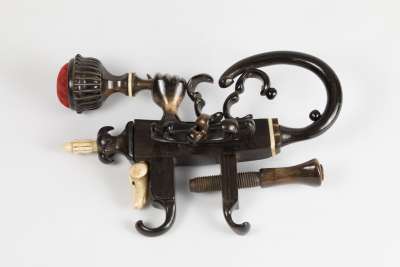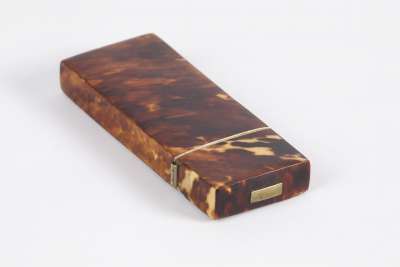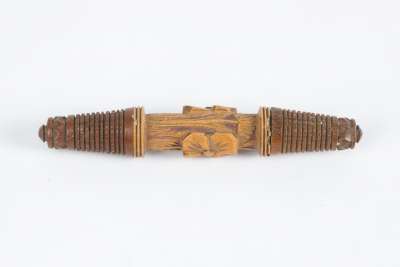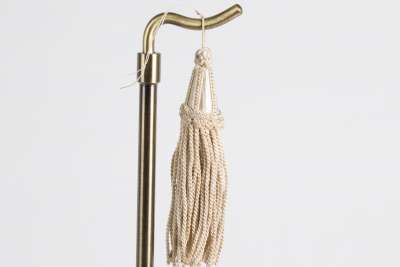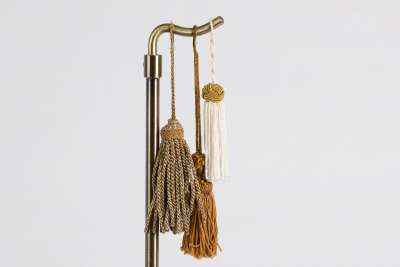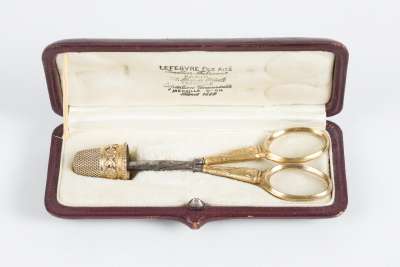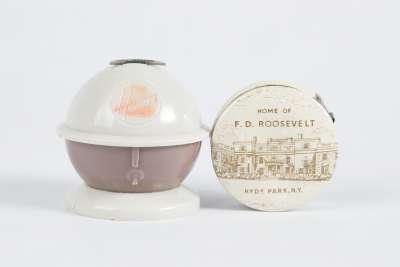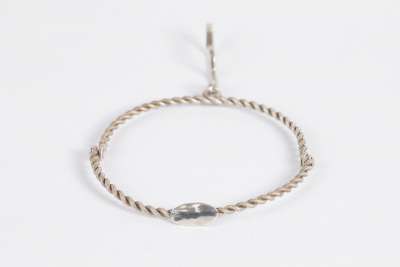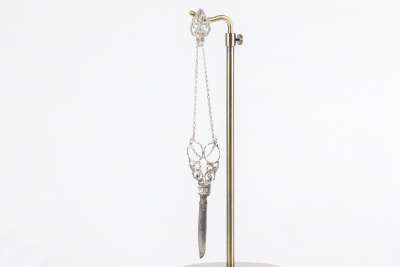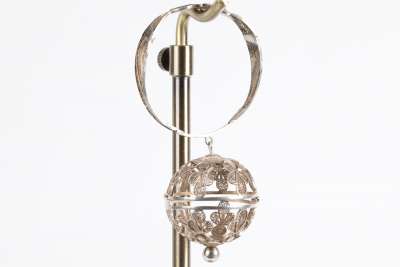This antique sewing awl, also known as a stiletto, originates from the Netherlands and dates back to the first half of the 1800s. Crafted from silver, this tool is elegantly encased in a sheath, exhibiting a refined design that speaks to its utilitarian purpose in needlework. As detailed in Kay Sullivan's book 'Needlework Tools and Accessories', this stiletto was traditionally used to make holes in coarse, stiff materials, facilitating the passage of a needle. The silverwork is typical of Dutch craftsmanship of the period, showcasing both functionality and aesthetic appeal.
Condition Report
The sewing awl/stiletto is in a condition consistent with its age and use over the years. The silver surface exhibits minor wear, which is typical for an item of this age, adding to its historical character. Any surface marks are commensurate with its use and do not detract from its functionality or historical interest. The sheath remains intact, securely holding the stiletto, ensuring it is still a practical tool for collectors and enthusiasts of antique needlework tools. Overall, this piece retains its structural integrity and continues to represent the craftsmanship of its time.
Dimensions
Weight: 10gm, Length: 8.7cm without sheath 7.7cm, Width: 2cm.
A Tool for Needlework
The original intended use of this sewing awl was in needlework, particularly useful for piercing holes in tough fabrics. This tool would have been an essential accessory for anyone engaged in sewing or embroidery, allowing for the effortless creation of precise holes. The stiletto's design ensures that it remains an effective tool for modern-day users who seek to engage in traditional sewing techniques or wish to preserve the authenticity of historical needlework practices.
Example of 19th Century Dutch Design
This sewing awl is a fine example of 19th-century Dutch design, characterised by its functional yet elegant form. The silver construction reflects the period's emphasis on durability and utility, while also providing a visually appealing finish. The sleek lines and smooth contours are typical of the era's design ethos, where even utilitarian objects were crafted with an eye for beauty. This piece exemplifies the balance between form and function that defines much of the craftsmanship from this time and region.
The Craft of Silverworking
The making of this sewing awl involved the skilled craft of silverworking, a prominent trade in the Netherlands during the 1800s. The process would have begun with the careful selection and melting of silver, followed by shaping and detailing using various tools. The creation of the sheath would require precise measurements to ensure a snug fit for the stiletto. The result is a practical yet ornate tool that reflects the high level of expertise and attention to detail typical of Dutch silversmiths of the period.
Crafted by a Dutch Artisan
While the exact maker of this sewing awl is not documented, it is representative of the work produced by Dutch artisans in the early 19th century. These craftsmen were known for their proficiency in working with silver, producing items that were both functional and decorative. The skills required to produce such items were typically passed down through generations, ensuring that techniques were refined and preserved. This sewing awl is a testament to the craftsmanship and artistic traditions of the time.
Collected by Enthusiasts of Needlework Tools
Antique sewing tools like this awl are highly sought after by collectors and enthusiasts of historical needlework accessories. These items provide insight into the techniques and materials used in past centuries, offering a tangible connection to the history of sewing and embroidery. Collectors value these pieces not only for their historical significance but also for their craftsmanship and the glimpse they offer into the daily lives of those who used them. This sewing awl is a valuable addition to any collection of needlework tools, representing a fascinating period in the history of sewing.

